Toronto Public Art
October 18, 2021 | Photo courtesy of Destination Ontario
Toronto Public Art
Toronto is a famously diverse cultural hub for all of Canada. Perhaps less known is just how extensive and exciting the city’s public artwork is. But with a new initiative, ArtworxTO: Toronto’s Year of Public Art 2021–2022, all that is changing.
Day One
MORNINGSLIDE BY GREAT GRAFFITI
HEAD TO THE HEART OF STREET ART IN GRAFFITI ALLEY
Toronto’s Graffiti Alley proves just how awesome street art can be. A ribbon of city alleyway hidden behind Queen Street West, (its proper name is Rush Lane), expect to see wildly colourful murals, some by well-known Toronto street artists. Perfect for photo ops!
Murals pop up everywhere in the city, for instance 2021’s Storytelling Mural on Central Hospital Lane in Cabbagetown (a half hour transit ride from Graffiti Alley). It’s the city’s first laneway “healing corridor,” with a series of Indigenous medicinal gardens and a mural based on Indigenous healing stories. It’s also part of The Laneway Project, transforming Toronto’s overlooked public spaces.

MORNINGWEND YOUR WAY THROUGH KENSINGTON
A FEAST FOR ALL SENSES IN KENSINGTON MARKET
Kensington Market is more than just a market, it’s a neighbourhood! A short walk north of Graffiti Alley, the market is on the traditional territory of the Haudenosaunee, the Mississaugas of the New Credit First Nation, and the Huron-Wendat. You may notice this history reflected in Queen Street’s other name, Ogimaa Mikana. It’s part of the The Ogimaa Mikana Project, aimed at restoring Anishinaabemowin place names to Toronto’s streets and byways.
The area first became a market in the early 1900s when Jewish immigrants moved into the area. That wave of migration also gave rise to the nearby fashion district, marked by artist Stephen Cruise’s giant thimble, “Uniform Measure/Stack,” at Spadina and Richmond.
Today the market is a rich tapestry of many cultures, a walkable, open-air marketplace filled with delectable produce; vintage clothing stores, and eclectic restaurants. One popular spot for live music is the restaurant/bar fittingly called Supermarket.
If you’re hankering for some of the best Chinese food anywhere, stroll a few minutes east to North America’s largest Chinatown. It’s a parade of fresh fruit, veggies and herbs, and its restaurants feature everything from delectable dim sum to delicious dumplings. (Mother’s Dumpling’s is one perennially popular spot.)
Of course, you could make a whole day of it in the Kensington-Chinatown area, for art as well as edibles. The Art Gallery of Ontario on Dundas Street is minutes away, and home to the famed Henry Moore Sculpture Centre. (To literally get into Moore’s work visit nearby Grange Park, and slide onto his famous “Large Two Forms” sculpture.) StrollTo’s guide to the neighbourhood will provide yet more reasons to linger longer.
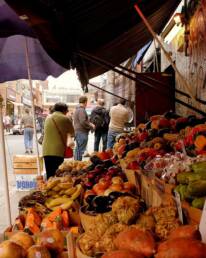
AFTERNOONROAM THE ROM
TAKE PHILOSOPHER’S WALK TO THE ROYAL ONTARIO MUSEUM
Take one of the city’s loveliest pathways — Philosopher’s Walk — which brings you through the University of Toronto, following the now-underground Taddle Creek. At Bloor Street round the corner east to the Royal Ontario Museum. The ROM is rightfully one of the most visited museums in Canada, with extensive galleries of art, world culture, and natural history. Delve into the Daphne Cockwell Gallery, a permanent exhibition dedicated to First Peoples art and culture. The exhibition contains more than one thousand works, from beautiful birchbark canoes to Lakota Sioux chief Sitting Bull’s war bonnet.
Bloor Street itself is home to Mink Mile, so named for an abundance of upscale shops. But the area is also a treasure trove of museums, art exhibitions and cultural centres, all within an easily walkable one mile (or via a quick subway hop). No wonder it’s been dubbed the Bloor Street Culture Corridor.
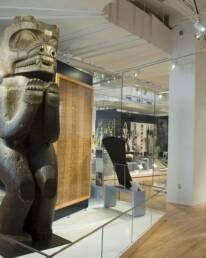
EVENINGSHOWTIME!
GET YOUR MUSIC FIX AT ICONIC KOERNER AND MASSEY HALLS
Two of the city’s finest concert halls are close to the ROM: the stunning Koerner (a three-minute walk), and legendary Massey (a twenty-minute subway ride). Koerner opened in 2009 to rave reviews for its acoustics and beauty. It showcases classical, jazz, pop and world music concerts of the highest order. The recently renovated Massey Hall dates back to 1894, and it’s seen an incredible list of artists perform centre stage, from Maria Callas to Bob Dylan to Glenn Gould to Bob Marley.
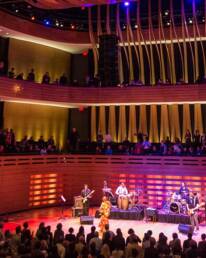
Day Two
MORNINGBEGIN BY THE LAKE
MEDITATE AT THE MUSIC GARDEN
The beguiling Toronto Music Garden makes for a tranquil, lakeside start to your day. The musical work that inspired it, Bach’s First Suite for Unaccompanied Cello, is reflected in the actual garden, with each movement corresponding to a different section.
From garden calm to city hustle and bustle — and colour, thanks to the Toronto Colour Walk, created by Toronto West BIA. Downtown buildings may trend grey, but splashes of artist-created colour bring the city to life. This self-guided walking tour takes you by a range of sculptures and murals, including two works by Douglas Coupland (yes, Generation X author Douglas Coupland): the playful “Bobber Plaza” and “Superior,” inspired by Group of Seven artist Lawren Harris’ painting “North Shore, Lake Superior, 1926.”
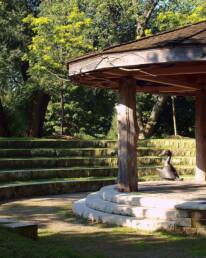
AFTERNOONLUNCH IN LESLIEVILLE
HISTORY AND HIPNESS, FROM THE DISTILLERY TO LESLIEVILLE
Stop 2: Head east to hip Leslieville, maybe with a stop en route at the Distillery District. There you can stroll the pedestrian-only enclave of restaurants, boutiques and galleries, all in striking former Victorian industrial buildings. On to Leslieville, so named after pioneering gardener George Leslie, whose 19th century nurseries spanned 150 acres. Artefacts from fields around Jones and Queen streets suggest that long before flowers and fruits Indigenous peoples camped in or near what’s now Leslie Grove Park. Today the area has a village feel, casual and fun, with plenty of options for foodies. Note: Take the streetcar from The Distillery to Leslieville to trundle over the Queen Street Bridge beneath by Eldon Garnet’s elegant art installation, “Time and a Clock.”
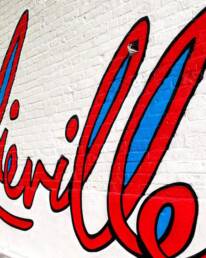
AFTERNOONWALK THE DON
WALK THE DON RAVINE FOR URBAN FOREST AND SCULPTURAL SURPRISES
Toronto is a city of ravines, a network of urban forest perfect for biking, walking and occasional glimpses of wild critters. Access the Lower Don Trail (a 4.7 kilometre walk along the Don River) at the Queen Street Bridge and head north. You’ll pass beneath the arched magnificence of the Prince Edward Viaduct (better known as the Bloor Viaduct, made famous by Michael Ondaatje’s In The Skin of a Lion). Next you’ll encounter “Monsters for Beauty, Permanence, and Individuality,” reconstructed copies of gargoyles from historic Toronto buildings. These striking sculptures were created by Omaskêko Cree artist Duane Linklater as part of the Don River Valley Park Art Program. Once you’re all walked out head up to The Danforth and Greektown for mouth-watering Greek specialties.

EVENINGCATCH A SHOW
TIME FOR SOME MUSIC…OR DANCE…OR THEATRE
Built as a movie theatre in 1919, the character-filled Danforth Music Hall hosts both local and international musicians. Home to smallish shows (capacity is roughly 1,400) it has a neighbourhood feel, bordered by leafy Riverdale. Or, if the play’s the thing, take a short streetcar ride south to Crow’s Theatre. Crow’s opened in 2017 in a sleek new complex complete with lobby bar. Since then, it’s quickly became a preeminent cultural destination with a penchant for inventive, fiercely contemporary (and frequently Canadian) work.
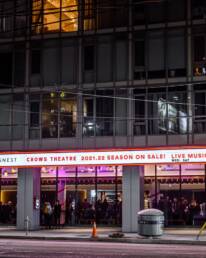
YOUR TRIP AT A GLANCE
SEE
Art Gallery of Ontario
ArtworxTO: Toronto’s Year of Public Art 2021–2022
Crows Theatre
Danforth Music Hall
Distillery District
Don River Valley Park Art Program
Duane Linklater, Monsters for Beauty, Permanence, and Individuality
Eldon Garnet, Time and a Clock
Grange Park
Greektown on the Danforth
Henry Moore, Large Two Forms
Koerner Hall
The Laneway Project
Massey Hall
The Ogimaa Mikana Project
ROM
Stephen Cruise,
Uniform Measure/Stack
Supermarket Bar
Toronto Music Garden
YOUR TRIP AT A GLANCE
This guide represents a weekend-long experience, highlighting one of the many wonderful destinations in the area. To suggest a destination for a future guide, please contact us.
All editorial decisions were made at the sole discretion of Ontario Culture Days staff. This guide was written by Li Robbins.
Prince Edward County
Prince Edward County
Prince Edward County has been called “Canada’s coolest Island hideout,” a place where “hip meets historic.” (By Condé Naste Traveller and The New York Times, respectively.) The County, as it’s known, is a world-renowned destination for its stunning beaches, charming towns, and exceptional food and wine. At two hours from Toronto it’s no surprise it’s such a popular destination.
Day One
MORNINGVISIT AMELIASBURGH
DAY 1 — 10:00 AM: PIONEERS, POETS, AND PERENNIALS — BEGIN YOUR COUNTY VISIT IN AMELIASBURGH
Long before European settlers arrived, Carrying Place was a meeting point for Anishnaabeg, Wendat and Haudenosaunee peoples — and a link between the Bay of Quinte and Lake Ontario. Today, Carrying Place is still a gateway to the island. And it’s just a short drive (not much in The County is a long drive) to the Ameliasburgh Heritage Village. Founded in 1968 in a former Wesleyan Methodist Church, it’s now a full pioneer village, including a blacksmith shop and a beekeeping building. (Do double check the Ameliasburgh Heritage Village website for opening times before going.)
If you’re a fan of poetry, note that famed Canadian poet Al Purdy lived on nearby Roblin Lake for many years. The Ameliasburgh Library has a collection of Purdy memorabilia.
Next, a fifteen-minute hop by car takes you to Oeno Gallery’s Sculpture Garden at Huff Estates Winery. There you’ll discover how art created by nature (think: perennials) can have a unique relationship with art created by human (think: glass, bronze, wood). And, since you’re already there, enjoy the scenery at Huff Estates Inn & Winery.
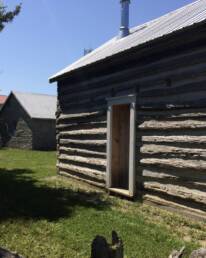
AFTERNOONEXPLORE QUAINT WELLINGTON
DAY 1 — 1:00 PM: REVEL IN WELLINGTON’S MANY CHARMS
It’s challenging to mention Wellington without using the word “quaint,” since the community is the site of some of Ontario’s oldest homes and finest architecture, including a house dating back to 1786. Wellington’s also at the heart of this region’s wine country, making it a perfect jumping off point for winery visits. But first, lunch! With cool lake breezes Wellington’s an ideal lunch stop — the only question being what to choose. La Condesa for tacos? Midtown Brewing Co for tasty light bites? Boutique hotel/restaurant/bar the Drake Devonshire for something upscale? Whatever you decide, a stroll along the beach boardwalk after lunch is in order. Or, peruse galleries on Main Street, for instance SideStreet Gallery, featuring local artisans, or the Sybil Frank Gallery, specializing in fine art.
Keep an eye out for green bicycles — they mark the home studios of glass blowers, potters etc. Of course, art is everywhere in The County, as the year-round Prince Edward County Arts Trail shows. It winds in and around Wellington, Bloomfield, and Picton, connecting arts lovers, buyers, and collectors with professional galleries and studios.

AFTERNOONENJOY LOCAL WINERIES
DAY 1 — 3:00 PM: SERIOUS ABOUT WINE, BUT REFRESHINGLY UNPRETENTIOUS
The County’s over forty wineries are known for being serious about wine while having “refreshingly unpretentious” wine tastings. They feature wines with a distinctive sense of place, due to the porous limestone-rich soil of The County. Local specialties include Pinot Noir and Chardonnay; adventure is also the name of the game with innovative Rieslings, Baco Noirs, Pinot Gris…the list goes on.
You’ll find a number of tempting wineries close to Hillier, a little hamlet with a vibrant arts community. (Home to Alchemy, an artist residency focused on community engagement through art, food and conversation.) There’s family-run Broken Stone Winery, priding themselves in “hand-crafted wines, grown by our family for you.” There’s Closson Chase, a winery that helped spearhead the birth of The County wine industry, and an early advocate for sustainable practices. There’s Stanners Vineyard, dedicated to producing premium Pinot Noir.
But don’t neglect The County’s cideries! For instance, the award-winning Loch Mor Cider Co. They specialize in traditional, European-style dry ciders in a lovely pastoral setting. (It must be said, “lovely pastoral settings” define much of Prince Edward County.)
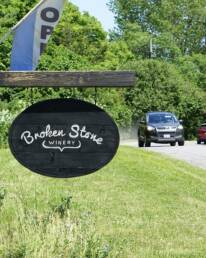
Day Two
MORNINGWANDER LOVELY LAVENDER FIELDS
DAY 2 — 11:00 AM: A CONTEMPLATIVE START AMIDST LAVENDER…OR ALPACAS
For a tranquil start to the day, surround yourself by fields of fragrant flowers at Millefleurs, a lavender and honey farm noted for its mead, a delightful sipping wine. The farm’s boutique brims over with lavender products, and honey and mead made on the farm.
If you’re still on a quest for comfort, swing by Chetwyn Farms, fifty-five acres devoted to Alpacas. The SHED at Chetwyn is a modern-day farm shop specializing in alpaca products. Watch the adorable woolly ones graze as you consider your cozy throw options. Or, head to nearby Noble Beast Farms to get up close and personal with the gentle creatures on an Alpaca trek.
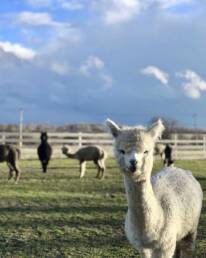
AFTERNOONHIT THE TRAIL
Day 2 — 1:00 PM: WALK OR RIDE THE MILLENNIUM TRAIL — NATURE, ART (AND PUBS!)
If it’s time for something more vigorous, take a hike or bike along The Millennium Trail. It’s 46-kilometres long, stretching from Carrying Place to Picton, The County’s central hub (itself chockablock with art galleries and restaurants). The trail wends its way through wine country with many fine restaurants, breweries and pubs en route. Built on a former rail line, it’s an easy (read: flat) walk or ride, complete with stunning scenery.
Take time for the arts in Bloomfield, where you’ll find the Hatch Gallery, featuring work by some of Canada’s finest contemporary artists, and the Baxter Arts Centre, a creative space for making art. (While in Bloomfield you may also want to wander down Barker Lane to visit Matron Fine Beer, surrounded by rural beauty.)
If you haven’t come prepared with your own two-wheeler, bikes are rentable at various locations including Wellington-based Ideal Bike, Bloomfield Bicycle Company, Pedego Electric Bikes and County Bike Rentals, among others.
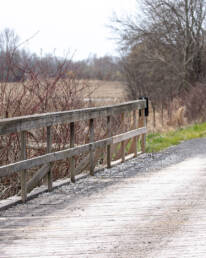
AFTERNOONMARVEL AT THE BEAUTIFUL SANDBANKS
DAY 2 — 3:00 PM: SOME OF THE BEST BEACHES IN CANADA ARE AT SANDBANKS
No itinerary of The County would be complete without mentioning Sandbanks Provincial Park, a 20-odd minute drive from Wellington. Sandbanks is home to the world’s largest baymouth barrier dune formation, with 12 kilometres of magnificent dunes formed by glaciers 12,500 years ago. White sand, turquoise water, and three beautiful beaches. Need we say more?
Sandbanks also provides an opportunity to learn about dune and wetland habitats on its walking trails. And, if you’re visiting in spring or fall you’re in for an avian treat as The County can be a good vantage point for a spectacular number of migratory birds. (Consider a visit to the Prince Edward Point Bird Observatory on the island’s southeast tip to learn more.)
Nature’s not the only art form in the Sandbanks area — a seven minute drive east and you’re at Mad Dog Gallery, located in a renovated century timber frame barn. There you’ll see the work of local artists, many of whom create works connected to County life. (For instance Andrew King, whose art celebrates local lighthouses and maritime history.)
Sandbanks is, understandably, a very popular destination, so make sure to buy a daily vehicle permit in advance to guarantee your spot. But don’t forget, there’s always more to explore on the island, with its nine distinct regions, 800 kilometres of shoreline, vast farmland, and abundance of charming towns.
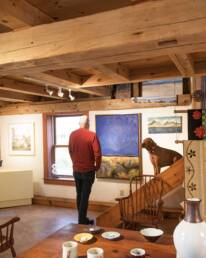
WANT TO TAKE A DETOUR?
Take the road less travelled with these stellar possibilities south of Picton:
- Macaulay Heritage Park takes you back to the 19th century. Stroll the Heritage Gardens; visit the former Church of St. Mary Magdalene, now a museum featuring a permanent exhibit dedicated to the County’s Indigenous history.
- Check out the whimsical Birdhouse City, a miniature community replicating historic County buildings as birdhouses.
Melt Studio and Gallery is run by encaustic (hot wax) artist Susan Wallis, and features the PAUSE experience — a forest bath and encaustic collaging guided by the artist. - For tasty artisanal cheeses it’s Black River Cheese, nestled on the banks of the river. Two special farms are in the vicinity: Quinta do Conde, with seasonal hyper-local dinners, and Morrison Point Farm with beautiful, historic stone fences (and small batch honey). Arts abound in and near Black River, with local artists’ studios and Black River Ridge, a summer art camp.
- Milford, self-proclaimed “hamlet of friendliness,” boasts three wineries (Lighthall Vineyards, Exultet Estates and Long Dog Winery), plus PECish Baking Company and a sustainably-run flower farm, FloraLora Flowers. Don’t miss Curious Goat General Store with its Bee & Blooms experience — an immersive adventure for the bee-curious.
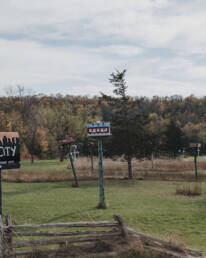
YOUR TRIP AT A GLANCE
SEE
Alchemy Artists Residency
Ameliasburgh Heritage Village
Ameliasburgh Library
Baxter Arts Centre
Birdhouse City
Black River Ridge
Chetwyn Farms
Curious Goat General Store
FloraLora Flowers
Hatch Gallery
Macaulay Heritage Park
Mad Dog Gallery
Melt Studio and Gallery
Millefleurs
The Millennium Trail
Noble Beast Farms
Oeno Gallery’s Sculpture Garden at Huff Estates Winery
Prince Edward County Arts Trail
Sandbanks Provincial Park
SideStreet Gallery
Sybil Frank Gallery
YOUR TRIP AT A GLANCE
This guide represents a weekend-long experience, highlighting one of the many wonderful destinations in the area. To suggest a destination for a future guide, please contact us.
All editorial decisions were made at the sole discretion of Ontario Culture Days staff. This guide was written by Li Robbins.
Halton Hills Region
Updated November 2022.
HALTON HILLS, GEORGETOWN AND GLEN WILLIAMS
Halton Hills is a community of towns, hamlets, and villages along the Niagara Escarpment, with the Credit River winding its way through the forests, plains, and marshes. The abundant natural beauty and small-town charm have captured the hearts of artists, encouraging many of them to call this place home.
Day One
MORNINGBIKE-FRIENDLY START TO YOUR DAY
DAY 1 – 10:00 AM: THE HALTON HILLS CULTURAL CENTRE HAS IT ALL
The Halton Hills Library and Cultural Centre has been designated a Bike Welcome Centre and has everything you need to tune up your ride and prepare for your tour. The John Elliot Theatre is in the same complex as the Helson Gallery, which places the old Congregational Church structure, with its vaulted ceilings and stained-glass windows, firmly in the present day. At the Helson Gallery, enjoy workshops, community art projects, and the latest work from local artists.
Stock up your bike basket with fresh produce, cheeses and breads from the local farmers market in downtown Georgetown. The farmers’ market runs Saturday mornings from June to October.
AFTERNOONRIDE DOWN HISTORIC GUELPH STREET
DAY 1 – 12:00 PM: A HISTORICAL STREET WITH SNACK AND EATS
Nineteenth-century history lives here at the crossroads of French Catholics and the Church of England. There’s St. John’s United (1840s with renovated gothic revival form), l’Eglise Sacré-Coeur (1885), and St. George’s Anglican Church (originally a wooden structure in 1833 before the sturdier stone structure replaced it in 1851).
If you’re hungry, you can do a coffee and snack crawl along your way to check out the best patios along the historic street. But save room because your next stop is perfect for a picnic.
AFTERNOONWANDER DOMINION GARDENS PARK
DAY 1 – 1:00 PM: ENJOY THE FRESH AIR IN DOMINION GARDENS PARK.
There’s a splash pad and a playground, but the Old Seed House Garden is the park’s main attraction. Entrepreneur William Bradley founded the garden in 1928, and within a decade, business was booming, with seeds sown from British Columbia to Newfoundland. Today, the area remains a tribute to its place in local history. The gazebo at the heart of the garden is a popular place to rest, with twin flowerbeds of tulips, daffodils, lilacs and forsythias surrounding the structure.
AFTERNOONVISIT THE GROUNDS OF HISTORIC DEVEREAUX HOUSE
DAY 1 – 2:30 PM: CUTTING ACROSS TOWN, YOU’LL COME ACROSS THIS PLEASANT VICTORIAN-ERA FARMHOUSE.
Though its surrounding farmland was established in 1829, it wasn’t until the 1850’s that Elijah Devereaux, a member of the local militia, constructed the house. Unfortunately, the building eventually fell into disrepair, but in 2007, locals fundraised to restore it to its former charm.
AFTERNOONTAKE A HIKE THROUGH SILVER CREEK
DAY 1 – 3:30 PM: IF YOU’RE KEEN TO CARRY ON, THE SILVER CREEK CONSERVATION AREA PRESENTS A WORTHY CHALLENGE.
There are high ridges, open plains, marshy lowlands, and several rivers. You may notice turkey vultures flying overhead and trout swimming through the waters. On your journey, you may come across a lonely cabin on what used to be the Fallbrook Farm. The existing cabin was built in 2001, replacing the early-to-mid 1800s original.
If all of this trekking has tired you out, rest up at one of the many local bed & breakfasts before tomorrow’s tour through Glen Williams.
If all of this trekking has tired you out, rest up at one of the many local bed & breakfasts before tomorrow’s tour through Glen Williams.
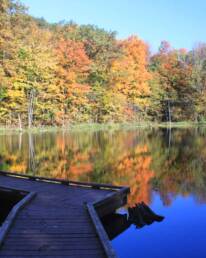
Day Two
MORNINGEXPLORE GLEN WILLIAMS PARK
The History of the hamlet known as Glen Williams is intertwined with that of Georgetown.
In 1825, United Empire loyalist Benajah Williams arrived in the area which would become Halton Hills. Benajah was the brother-in-law of George Kennedy, and like his relation, he was industrious and established several mills.
Glen Williams, small as it was, had to be self-sufficient in many respects. If the villagers needed something, they had to make it themselves, so it was with Glen Williams Park. As with its other civic spaces, the locals recognized the need for a gathering place and they cleared the land to create the park in 1964. Now, it’s a favourite of residents in which to enjoy the fresh air and catch the occasional softball game.
MORNINGGO FOR A HIKE ON THE CREDIT VALLEY FOOTPATH
DAY 2 – UP FOR A BIT OF A HIKE?
Glen Williams Park gives visitors easy access to the Credit Valley Footpath via the Ainley Trail access point. After a detour through the meadows in the Glen community, explore the area around the Credit River, which is teeming with vegetation and wildlife.
The Wendat and Mississaugas were the first people to explore the area’s ridges, plains, and rivers, using the Credit River to facilitate trade and transportation. When European settlers arrived, they tapped the river’s current to power mills for several industrial purposes. On your hike, you may spot the ruins of the Barber Mill, which was built in 1854 and was shuttered a century later.
For Ontario Culture Days 2019, the First Steps along the Path’ Celebration took place here. The program received a Spotlight Recognition Award for showcasing a unique set of activities capturing the themes of well-being, local heritage, and Indigenous history. Programming highlights included an Indigenous Water Ceremony, interactive arts activities, themed trail walks and tasting traditional Indigenous cuisine.
MORNINGVISIT WILLIAMS MILL ART CENTRE
DAY 2 – THE WILLIAMS MILL CREATIVE CENTRE BEGAN AS A SAWMILL, BUILT BY BENAJAH WILLIAMS IN 1825.
The structure was rebuilt in 1852 and then repurposed several times⎯⎯it became a hosiery factory, an electrical facility, and a fruit processing factory. Now, it’s a hub for artists.
The Mill is a collection of artist studios that are open to the public. The artists run regular classes on life drawing, sculpture, music and more. Be sure to check out Glen Williams Glass to watch glass artists at work, and look out for community events and celebrations held at the space.
If you’re hungry, grab some lunch at the Copper Kettle, which is a short walk away. You’ll also find options for sushi, pasta, burgers and pancakes in the area.
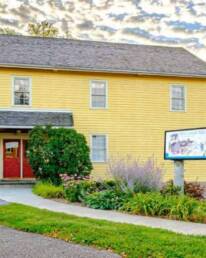
AFTERNOONHERITAGE TOUR OF TOWN
DAY 2 – THE FINAL LEG OF YOUR JOURNEY STARTS AT GLEN WILLIAMS TOWN HALL.
The final leg of your journey starts at Glen Williams Town Hall. In 1871, local leaders established the gathering to meet the varied needs of this small, tight-knit community. The newly minted building was often rented out for church services, concerts, and the occasional theatre production. Lucy Maude Montgomery, of Anne of Green Gables fame, lived nearby in Norval and staged a few shows here in her day.
Walking from the town hall, explore the area’s heritage homes which date back to the mid-19th century. Explore the Charles Williams House, William-Holt House, the Williams Edge Tool Factory, and the Forester House. They aren’t palatial abodes or massive factories, but these buildings were the beating heart of Glen Williams at the time.
And with that, you’ve completed your bite-sized excursion in Glen Williams. You can explore the other towns and hamlets in the hills or sit on the benches by St. Alban the Martyr Anglican Church and watch the Credit River flow.
YOUR TRIP AT A GLANCE
YOUR TRIP AT A GLANCE
This guide represents a weekend-long experience, highlighting one of the many wonderful destinations in the area. To suggest a destination for a future guide, please contact us.
All editorial decisions were made at the sole discretion of Ontario Culture Days staff. This guide was written by Li Robbins.



